Energy
‘Take On The Resistance’: Who Could Trump Tap To Help Cement His ‘Drill, Baby, Drill’ Agenda?
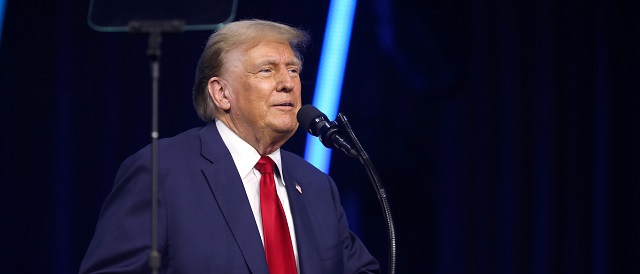
 From the Daily Caller News Foundation
From the Daily Caller News Foundation
By NICK POPE
Former President Donald Trump has promised to revitalize and unleash the American energy sector if he returns to the White House in 2025, and has a plethora of former officials and new faces he could tap for key executive branch roles.
The Biden administration has utilized executive agencies like the Environmental Protection Agency (EPA), Department of the Interior (DOI) and the Department of Energy (DOE) to implement many of the key policies driving its sprawling climate agenda. These agencies will be crucial to any effort by a prospective Trump administration to undo President Joe Biden’s energy legacy and execute Trump’s “drill, baby, drill” agenda.
Several insiders with extensive experience in Republican energy politics speculated to the Daily Caller News Foundation as to who Trump could pick to lead that charge if he wins in November.
“I am really impressed by the number of former Trump officials, as well as people who have not served before who are also interested in doing so in the future who have reached out to inquire about my prior experience or the process,” David Bernhardt, who served as the secretary of the interior during the latter half of Trump’s first term, told the DCNF. “If President Trump wins, he’s going to have droves of capable people to choose from to fill his political appointments this time around — a lot of seasoned veterans, and also a lot of people with new, fresh ideas. I think that’s very exciting and bodes well for the president’s second term and for our country.”
When asked how he would bring down the cost of goods such as gas, Trump says, "Drill baby, drill!" pic.twitter.com/cVjqzjeaAJ
— Daily Caller (@DailyCaller) May 11, 2023
However, the Trump campaign told the DCNF that internal discussions about who may fill these roles have not started.
“There have been no such discussions about who will serve in a second Trump Administration,” Karoline Leavitt, the Trump campaign’s national press secretary, told the DCNF. “When the time comes, President Trump will choose the best possible people to implement his America First agenda.”
Whoever Trump selects to lead the EPA will have to confront an agency that has been juiced with thousands of new employees and promulgated numerous major regulations. The Biden administration has used the EPA to advance some of its most aggressive environmental policies, which include a major green power plants regulation, electric vehicle (EV) mandates, stringent fine particulate matter emissions rules and more.
At least some of these rules figure to be on the chopping block if Trump returns to office, as the former president has already pledged to walk back EV regulations.
Andrew Wheeler, who helmed the agency between 2019 and 2021, could be tapped to take the reins again if Trump wins in November, one energy expert, who wishes to not be publicly identified, speculated to the DCNF.
Others who may be under consideration include Mandy Gunasekara, who served variously as EPA chief of staff, principal deputy assistant administrator and senior policy advisor during Trump’s first term.
“I have a beautiful community in Oxford, Mississippi, and it would be very hard to leave. Plus, the idea of going back into a hostile situation away from my children and the ‘Bible girls’ is hard pill to pill to swallow. Ultimately, that’s a bridge I’ll cross if I get there,” Gunasekara told the DCNF. “Andrew Wheeler is a very experienced leader at EPA and would no doubt faithfully execute the President’s agenda again.”
Myron Ebell, a recently-retired energy policy expert formerly at the Competitive Enterprise Institute and a member of the Trump EPA transition team, believes that Gunasekara and Wheeler “would both be great choices,” he told the DCNF.
“I think it’s inappropriate to discuss a position I may be offered,” Wheeler told the DCNF when contacted for this story.
Another name to watch is Anne Vogel, who currently runs the Ohio EPA, according to the energy expert. Prior to taking that role, Vogel worked for the American Electric Power Company, handling federal regulatory matters in Washington, and she also has experience working at a private law firm.
“Director Anne Vogel currently has no intention of leaving her position at Ohio EPA,” a spokesperson for the agency told the DCNF.
Notably, Vogel testified to Congress in March 2023 about the train derailment and subsequent chemical burn-off that marred the skies of East Palestine, Ohio, in February 2023.
“I think that we’re going to need people that are committed to reforming these agencies and advancing the Trump agenda, which is basically unleashing the energy sector, and that includes the coal industry, oil and gas and everything else,” Steve Milloy, a senior legal fellow for the Energy and Environmental Legal Institute and a former member of the Trump EPA transition team, told the DCNF. “They’ve got to be willing to take on the resistance. And in Trump one, people weren’t necessarily willing or prepared to take on the resistance, and there’s going to be a lot of resistance.”
EPA Chief Insists His Agency Has Not Sent ‘One Dime’ To Hardline Left-Wing Org — But There’s A $50 Million Problemhttps://t.co/BXjlAkuWup
— Daily Caller (@DailyCaller) July 11, 2024
‘Full Speed Ahead’
As the agency in charge of managing America’s federally-controlled lands and waters, DOI has a major role to play in the American energy sector given that it leases millions of onshore and offshore acres to oil and gas developers. Under Biden and Interior Secretary Deb Haaland, DOI has taken numerous actions to restrict development on millions of acres of American land and issued a bare-bones leasing schedule for offshore oil and gas extraction in the Gulf of Mexico, for example.
In light of Trump’s calls to “drill, baby, drill,” the DOI’s approach to natural resource management is likely to change dramatically from its current attitude as part of the Biden administration.
Tom Pyle, president of the American Energy Alliance, told the DCNF to keep an eye on Republican Govs. Mike Dunleavy of Alaska and Doug Burgum of North Dakota as possible leaders of DOI under a prospective second Trump presidency. However, Burgum may be in play for other positions, such as secretary of the interior or perhaps a high-level White House role, Pyle told the DCNF.
A representative for Burgum referred the DCNF to the Trump campaign.
Both McKenna and Ebell indicated that Bernhardt could be a good fit to return to the top job at DOI should he and Trump have mutual interest. For his part, Bernhardt declined to comment about whether he wants to get back into the fray or specific roles he would ostensibly have interest in filling during a second Trump term.
Pyle said he does not expect Trump to feel an obligation to stick to the establishment when selecting his political appointees.
“It’s clear with President Trump’s vice presidential pick [J.D. Vance] that he no longer feels compelled to extend an olive branch to the GOP establishment,” Pyle told the DCNF. “It’s Trump’s party now, and he chose someone who he thinks will best help implement his agenda.”
Mike McKenna, a GOP strategist with extensive energy sector experience, agreed that Dunleavy and Burgum could each be the type of person to run the DOI for Trump if called upon to do so.
“I hope they will go full speed ahead on restoring or increasing energy production in the federal estate” regardless of who Trump might pick for the top job if he wins, Ebell told the DCNF. “But I also hope that they will focus and put some effort into improving federal land management.”
Ebell floated former Alaska Republican Lt. Gov. Mead Treadwell as a possibility should he have interest. He also said that Republican Sens. John Barrasso of Wyoming and Mike Lee of Utah would both do well in the position, in his view, but that they may both be too valuable as seasoned legislators to make the jump to the executive branch.
“Senator Barrasso is focused on working for the people of Wyoming and passing President Trump’s agenda in the U.S. Senate,” a Barrasso spokesperson told the DCNF.
SEN. HAWLEY: "Jobs for blue-collar workers in this nation are valuable resources…Why should those things…be sacrificed in favor of your agenda for radical climate change?"
HAALAND: "I know that there's like 1.9 jobs for every American in the country…There's a lot of jobs."… pic.twitter.com/n21gostPdE
— Daily Caller (@DailyCaller) May 2, 2023
‘Dark Horse’
Choosing a successor for Jennifer Granholm to lead the DOE will be another key decision for Trump should he prevail this November.
Among other initiatives, the Biden DOE has pushed regulations promoting energy efficient appliances, a broad building decarbonization agenda and sought to loan huge sums of taxpayer cash to green energy companies since 2021.
McKenna, who is plugged into both the energy industry and GOP politics, flagged several possible candidates to look out for.
Paul Dabbar, who served as the under secretary for science at DOE during Trump’s first term, could be an option, with McKenna pointing to his managerial skills as a strength that could appeal to Trump. Dabbar declined to comment when contacted for this story.
McKenna also identified Burgum as a possible option for DOE, but like Pyle, McKenna believes that Burgum could be called on to take any number of roles, stretching from DOE to the White House or even the Department of Commerce, should he have interest in serving in a possible second Trump administration.
One “dark horse” possibility to watch is Bill Cooper, who currently works for Golden Pass LNG as vice president and general counsel, McKenna said. In addition to his private sector mettle, Cooper has experience at DOE, having served in the agency for about two years in various senior roles during Trump’s first term, making him a possible candidate should he have interest in the gig.
Ebell is not discounting the possibility that Trump may dip into the private sector to find his potential energy secretary.
“I think looking in the private sector makes sense,” Ebell told the DCNF. “It makes a lot of sense if it’s somebody who isn’t part of the subsidy chain, who isn’t part of the corporate welfare world, special interests who get money under the so-called Inflation Reduction Act, or other DOE programs.”
Cooper, Treadwell, Lee’s office and Dunleavy’s office did not respond to requests for comment.
Energy
75 per cent of Canadians support the construction of new pipelines to the East Coast and British Columbia
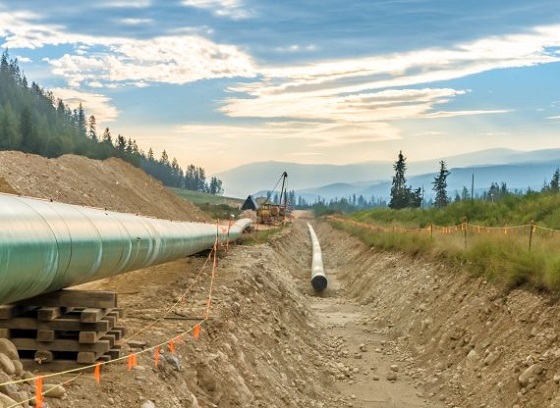
-
71 per cent of Canadians find the approval process too long.
-
67 per cent of Quebecers support the Marinvest Energy natural gas project.
“While there has always been a clear majority of Canadians supporting the development of new pipelines, it seems that the trade dispute has helped firm up this support,” says Gabriel Giguère, senior policy analyst at the MEI. “From coast to coast, Canadians appreciate the importance of the energy industry to our prosperity.”
Three-quarters of Canadians support constructing new pipelines to ports in Eastern Canada or British Columbia in order to diversify our export markets for oil and gas.
This proportion is 14 percentage points higher than it was last year, with the “strongly agree” category accounting for almost all of the increase.
For its part, Marinvest Energy’s natural gas pipeline and liquefaction plant project, in Quebec’s North Shore region, is supported by 67 per cent of Quebecers polled, who see it as a way to reduce European dependence on Russian natural gas.
Moreover, 54 per cent of Quebecers now say they support the development of the province’s own oil resources. This represents a six-point increase over last year.
“This year again, we see that this preconceived notion according to which Quebecers oppose energy development is false,” says Mr. Giguère. “Quebecers’ increased support for pipeline projects should signal to politicians that there is social acceptability, whatever certain lobby groups might think.”
It is also the case that seven in ten Canadians (71 per cent) think the approval process for major projects, including environmental assessments, is too long and should be reformed. In Quebec, 63 per cent are of this opinion.
The federal Bill C-5 and Quebec Bill 5 seem to respond to these concerns by trying to accelerate the approval of certain large projects selected by governments.
In July, the MEI recommended a revision of the assessment process in order to make it swift by default instead of creating a way to bypass it as Bill C-5 and Bill 5 do.
“Canadians understand that the burdensome assessment process undermines our prosperity and the creation of good, well-paid jobs,” says Mr. Giguère. “While the recent bills to accelerate projects of national interest are a step in the right direction, it would be better simply to reform the assessment process so that it works, rather than creating a workaround.”
A sample of 1,159 Canadians aged 18 and older were surveyed between November 27 and December 2, 2025. The results are accurate to within ± 3.5 percentage points, 19 times out of 20.
Business
Geopolitics no longer drives oil prices the way it used to
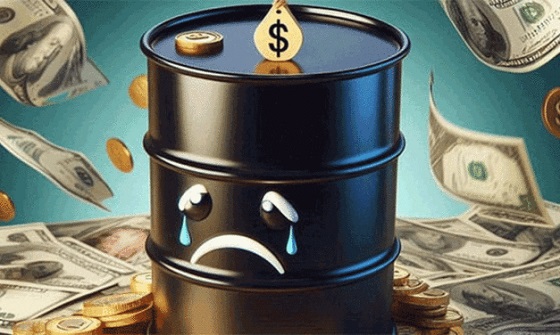
This article supplied by Troy Media.
Oil markets are shrugging off war and sanctions, a sign that oversupply now matters more than disruption
Oil producers hoping geopolitics would lift prices are running into a harsh reality. Markets are brushing off wars and sanctions as traders focus instead on expectations of a deep and persistent oil glut.
That shift was evident last week. Despite several geopolitical developments that would once have pushed prices higher, including the U.S. seizure of a Venezuelan crude tanker and fresh Ukrainian strikes on Russian energy infrastructure, oil markets barely reacted, with prices ending the week lower.
Brent crude settled Friday at US$61.12 a barrel and U.S. West Texas Intermediate at US$57.44, capping a weekly drop of more than four per cent.
Instead of responding to disruption headlines, markets were reacting to a different risk. Bearish sentiment, rather than geopolitics, continued to dominate as expectations of a “2026 glut” took centre stage.
At the heart of that outlook is a growing supply overhang. The oil market is grappling with whether sanctioned Russian and Iranian cargoes should still be counted as supply. That uncertainty helps explain why prices have been slow to react to a glut that is already forming on the water, said Carol Ryan, writing for The Wall Street Journal.
The scale of that buildup is significant. There are 1.4 billion barrels of oil “on the water,” 24 per cent higher than the average for this time of year between 2016 and 2024, according to oil analytics firm Vortexa. These figures capture shipments still in transit or cargoes that have yet to find a buyer, a clear sign that supply is running ahead of immediate demand.
Official forecasts have reinforced that view. Last week, the International Energy Agency trimmed its projected 2026 surplus to 3.84 million barrels per day, down from 4.09 million barrels per day projected previously. Even so, the IEA still sees a large oversupply relative to global demand.
Demand growth offers little relief. The IEA expects growth of 830 kb/d (thousand barrels per day) in 2025 and 860 kb/d in 2026, with petrochemical feedstocks accounting for a larger share of incremental demand. That pace remains modest against the volume of supply coming to market.
OPEC, however, has offered a different assessment. In its latest report, the group pointed to a near balance, forecasting demand for OPEC+ crude averaging about 43 million barrels per day in 2026, roughly in line with what it produced in November.
Reflecting that confidence. OPEC+ kept policy steady late in November, pausing planned output hikes for the first quarter of 2026 while more than three million barrels per day of cuts remain in place. Those measures are supportive in theory, but markets have shown little sign of being persuaded.
Recent geopolitical events underline that scepticism. The ongoing Russia-Ukraine war and Ukrainian strikes on Russian energy infrastructure, including reported hits on facilities such as the Slavneft-YANOS refinery in Yaroslavl, again failed to lift prices. Russia-Ukraine headlines pulled prices down more than strikes lifted them, according to media reports, suggesting traders were more attuned to “peace deal” risk than to supply disruption.
Washington’s move against Venezuelan crude shipments offered another test. The U.S. seizure of a Venezuelan tanker, the first formal seizure under the 2019 sanctions framework, had a muted price impact, writes Marcin Frackiewicz of Oilprice.com.
Venezuela’s exports fell sharply in the days that followed, but markets remained largely unmoved. One explanation is that Venezuela’s output is no longer large enough to tighten global balances the way it once did, and that abundant global supply has reduced the geopolitical premium.
Taken together, the signal is hard to miss. Oil producers, including in Canada, face a reality check in a market that no longer rewards headlines, only discipline and demand.
Toronto-based Rashid Husain Syed is a highly regarded analyst specializing in energy and politics, particularly in the Middle East. In addition to his contributions to local and international newspapers, Rashid frequently lends his expertise as a speaker at global conferences. Organizations such as the Department of Energy in Washington and the International Energy Agency in Paris have sought his insights on global energy matters.
Troy Media empowers Canadian community news outlets by providing independent, insightful analysis and commentary. Our mission is to support local media in helping Canadians stay informed and engaged by delivering reliable content that strengthens community connections and deepens understanding across the country.
-

 Automotive16 hours ago
Automotive16 hours agoPoliticians should be honest about environmental pros and cons of electric vehicles
-

 Daily Caller2 days ago
Daily Caller2 days ago‘Almost Sounds Made Up’: Jeffrey Epstein Was Bill Clinton Plus-One At Moroccan King’s Wedding, Per Report
-
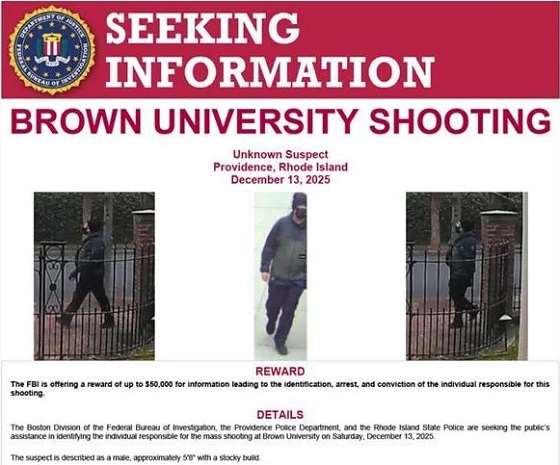
 Crime2 days ago
Crime2 days agoBrown University shooter dead of apparent self-inflicted gunshot wound
-

 Bruce Dowbiggin1 day ago
Bruce Dowbiggin1 day agoHunting Poilievre Covers For Upcoming Demographic Collapse After Boomers
-

 Business2 days ago
Business2 days agoTrump signs order reclassifying marijuana as Schedule III drug
-
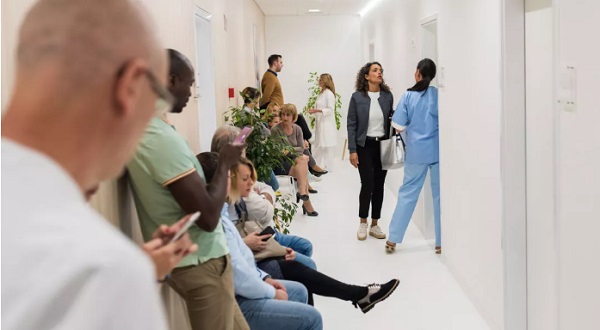
 Alberta1 day ago
Alberta1 day agoAlberta’s new diagnostic policy appears to meet standard for Canada Health Act compliance
-
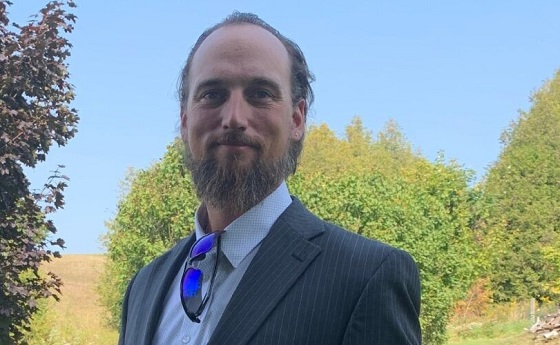
 COVID-191 day ago
COVID-191 day agoFreedom Convoy protester appeals after judge dismissed challenge to frozen bank accounts
-

 Alberta2 days ago
Alberta2 days agoHousing in Calgary and Edmonton remains expensive but more affordable than other cities







